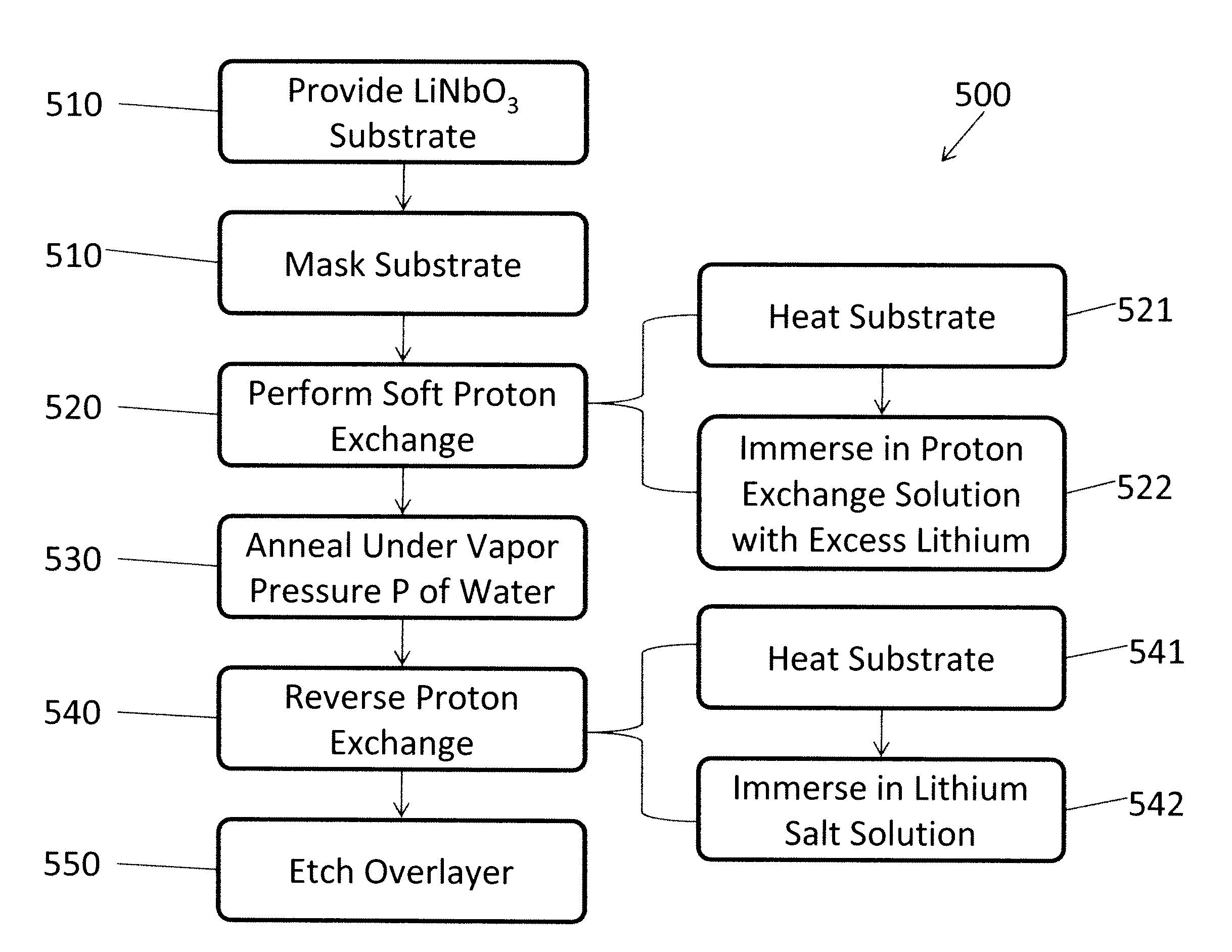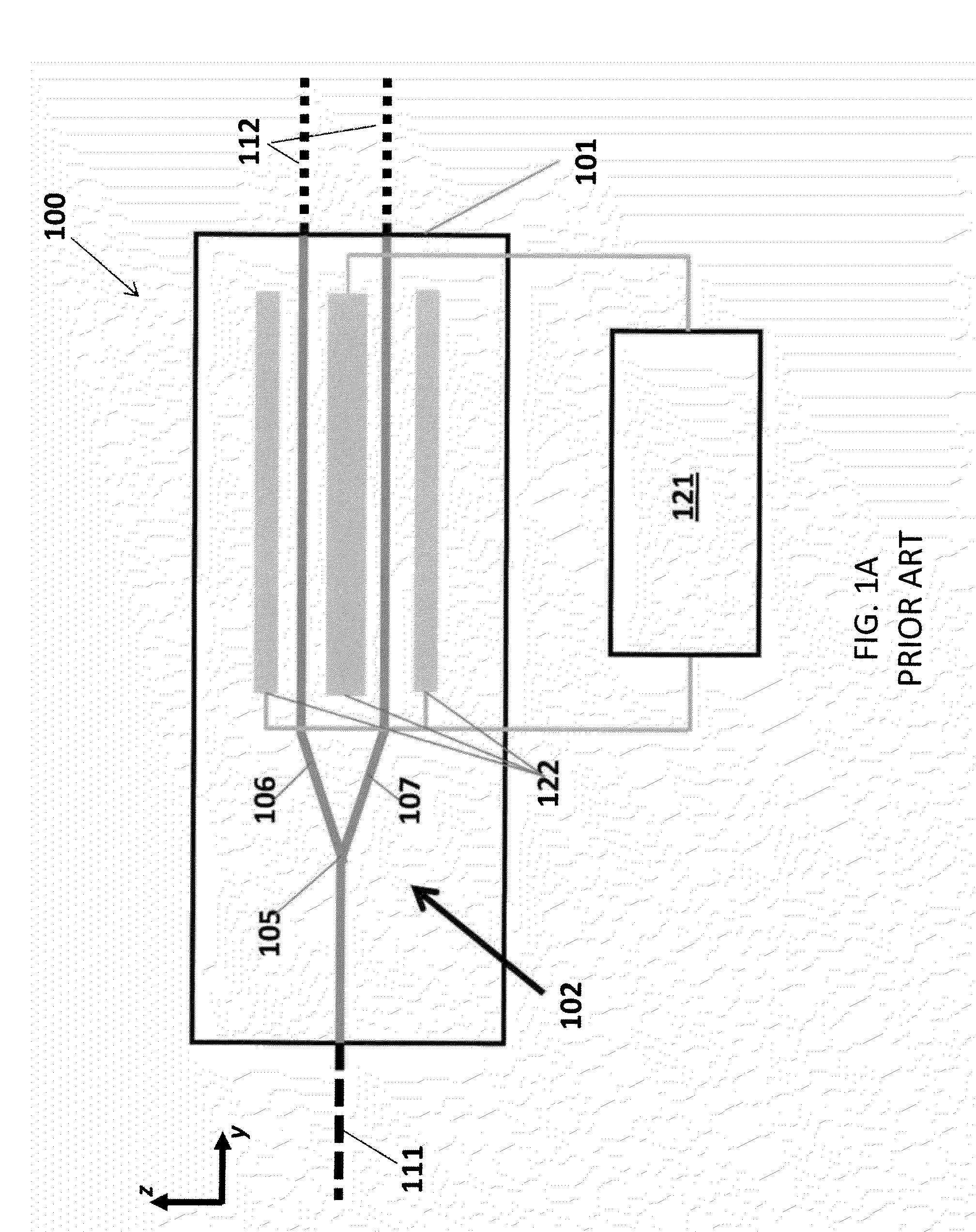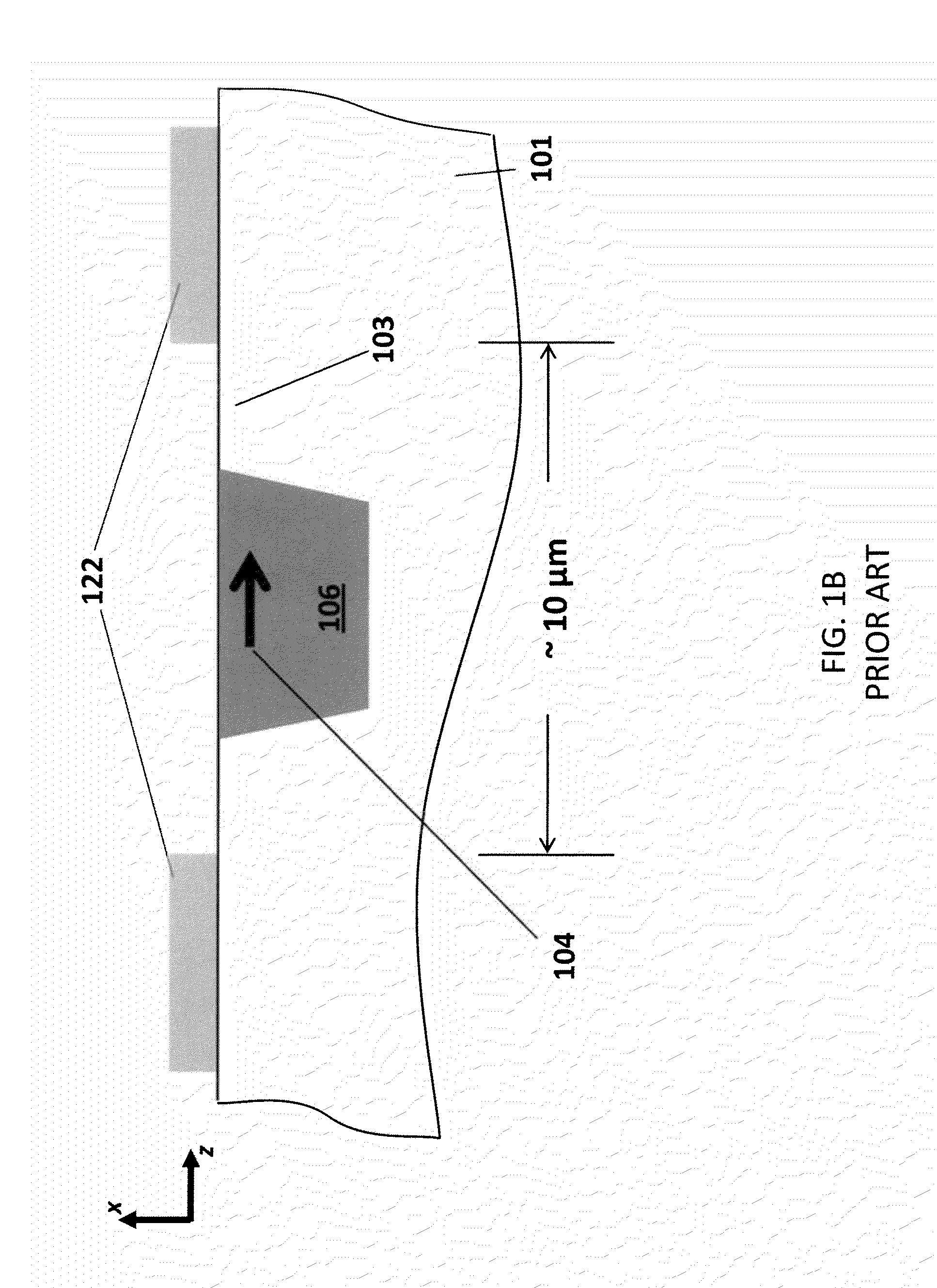Stable Lithium Niobate Waveguides, And Methods Of Making And Using Same
a lithium niobate and waveguide technology, applied in the field of lithium niobate waveguides, and methods of making and using same, can solve the problems of waveguide instability, limitation of application, and performance degradation of lithium niobate waveguides prepared using conventional proton exchange techniques, and achieve no degradation in performance and performance.
- Summary
- Abstract
- Description
- Claims
- Application Information
AI Technical Summary
Benefits of technology
Problems solved by technology
Method used
Image
Examples
Embodiment Construction
Overview
[0036]Embodiments of the present invention provide lithium niobate waveguides that have few, if any, defects in the crystalline lattice, and are stable under a wide variety of environmental conditions. Thus, in contrast to waveguides made in accordance with previously known methods, feedback circuitry need not be used to monitor the performance of the inventive waveguides and continually adjust the applied voltages to compensate for drifts in performance.
[0037]The waveguides of the present invention may be formed using a combination of steps that, together, reduce or eliminate many of the aforementioned problems associated with previously known lithium niobate waveguides, particularly drift in the refractive index and electrical conductivity, or complexity of fabrication. These steps include a “soft” proton exchange process for changing the refractive index of the lithium niobate substrate, in which an excess of lithium ions is provided. For example, a solution of lithium be...
PUM
| Property | Measurement | Unit |
|---|---|---|
| Temperature | aaaaa | aaaaa |
| Temperature | aaaaa | aaaaa |
| Fraction | aaaaa | aaaaa |
Abstract
Description
Claims
Application Information
 Login to View More
Login to View More - R&D
- Intellectual Property
- Life Sciences
- Materials
- Tech Scout
- Unparalleled Data Quality
- Higher Quality Content
- 60% Fewer Hallucinations
Browse by: Latest US Patents, China's latest patents, Technical Efficacy Thesaurus, Application Domain, Technology Topic, Popular Technical Reports.
© 2025 PatSnap. All rights reserved.Legal|Privacy policy|Modern Slavery Act Transparency Statement|Sitemap|About US| Contact US: help@patsnap.com



